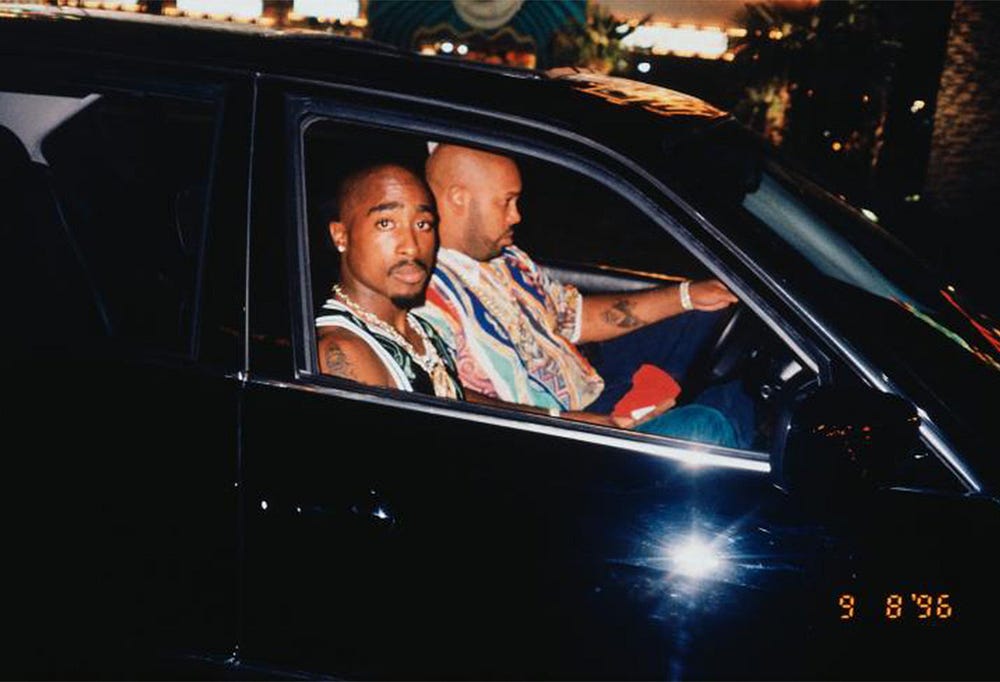XXXTENTACION’S FATAL OUTCOME
“History never repeats itself but it often rhymes.”
Another rapper dead. It’s an all too familiar phrase heard whenever tragedy strikes in hip-hop. Last year, the rapper who made headlines for his premature death was Lil Peep who overdosed on a combination of fentanyl and xanax pills. In true internet culture fashion, his death was broadcast across social media when a friend of Peep recorded an Instagram story of him passed out on the tour bus. At the time of the recording, Peep’s friend was unaware that the late-rapper was in fact dead. The IG story was immediately deleted but as all things go, once anything makes its way to the internet it’s there to stay.
A couple of months ago the internet experienced déjà vu as a video of XXXTENTACION, whose birth name is Jahseh Dwayne Onfroy, circulated via Twitter of the rapper slumped in his BMW i8, dead from gunshot wounds. The news altogether was a hurricane of conflicting reactions ranging from empathy to no remorse, from shock to neutral. As far as the hip-hop community goes, Onfroy’s death received overwhelming sadness and empathy from every notable hip-hop figure. Even some of his biggest critics gave their condolences to the young man.

The list of murdered rappers is stomach churning, especially when this is not including rappers who have died due to drug overdose. Besides Lil Peep, others who have fallen victim to this epidemic are Ol Dirty Bastard, Big Moe, Pimp C, and Eyedea. The question that begets from such tragedy is what the hell is going on in hip-hop?
Since the culture’s birth in the late 1970’s, hip-hop has undergone a series of growing pains, overcoming incredible odds to become a global phenomena. In the last last decade alone, it’s influence has transcended the studio and spilled into fashion, high-end art, and luxury branding. So why hasn’t hip-hop grown out of its self-destructive and violent roots? Or is the right question to ask is, can it?

It’s on just like it was on when you were young and you want to say ‘fuck that’. Just like you said ‘fuck that’, back then. So how come, now that I’m twenty years old and ready to start some shit, everybody’s telling me to ‘calm down’. — Tupac Shakur
Whenever a rapper in their early-twenties meets a violent fate, the most common commentary made is about their youthful age. It’s not a coincidence that young murdered rappers are young troubled men. A history of pain, whether inflicted on others or on themselves, combined with paranoia, toxic-masculinity, and depression creates a recipe for tragedy.
The hip-hop community will often speak about how these young men were robbed of an opportunity to mature and right their wrongs. That the positive changes they began to make would be lost in vain over their often questionable and controversial past, and they’re right. Everyone on this planet deserves a chance to learn from their mistakes, grow as individuals, and make amends for their wrongs. The big problem that no one is willing to talk about or have a discussion about the concept of youthism and how it directly affects hip-hop and it’s never-ending problem of young rappers being murdered.
Youthism is a scarcely defined and relatively new term, and in fact ‘youthism’ isn’t even a real word per se. There are two definitions that align with the word and context plays a role in which definition applies. The first is that youthism is an obsession or worship of youth while the other falls into the category of discrimination against the youth. In the context of this discussion, it’s the former. Of course, social media is a major influence in that aspect with many of today’s up-and-coming rap stars accumulating millions of followers via Instagram while before they’re even considered legal adults. Lil Pump is the most notable example of this phenomena.
This has given young artists a 24/7 promotional cycle powered by the fans and the exposure grows the more outlandish the antics. This kind of power and influence often perpetuates these artists to be rewarded for bad behavior and established artists concerned with maintaining relevancy with younger fans often endorse this dynamic. This ultimately leads to an ethical tug-of-war.
The murders of these types of young artists like Onfroy are preceded by legal and personal issues. For this young man it ranged from gun possession, domestic violence, to his own admission of beating up homosexual. Then toss in a list of enemies he perpetuated through his volatile behavior (which he often promoted via social media), a significant portion of the internet’s reaction was “good riddance” when news came of his death. What is haunting is the reality that Onfroy is not an outlier— 20-year old black male shot dead is a common headline and a Google search will show that.
Youthism has created a self-destructive environment by giving too much tolerance to the youth and not doing our part as a society to hold them accountable for their actions. Older generations tend look at their own troubled pasts and perpetuate the belief that these artists will “grow out of their 20’s” when the right action should be to intervene, connect, and guide.
Violence and drug abuse is problem that hip-hop should’ve grown out of long ago. The culture has risen to such a prominent status in society that having these vices still at the forefront of its image is a sign that something needs to be done and the responsibility falls on everyone. The older and younger generation.
It’s one thing to be a keyboard activist and speak on the problem through the Twitter feeds and Instagram stories but it direct action to have a legitimate chance at making an impact. In the above video, French Montana demonstrates this by attempting to intervene on Mac Miller’s addiction to codeine. It’s an uncomfortable interaction to witness and that discomfort can be seen on Montana’s face but it shows promise that there’s some initiative by more established artists to speak up.
Hip-hop has the resources to combat these serious issues and there’s a Forbes list to prove that but it comes down to the willingness to put egos aside and have a real discussion. Truth be told, it has nothing to do with the music anymore, it’s deeper than rap, and if the recent J. Cole and Lil Pump interview has shown us anything it’s that its possible to have these discussion no matter how big the generation gap.
The other major hurdle to overcome is the hivemind and mob mentality that runs rampant on social media. It has stripped public thought of its beautiful ability to address social ills and deeply troubled individuals with a poignant and intelligent perspective. Society now only has two modes: ruthless crucifixion and unreasonable bias. No longer are we allowed to be flawed and terrifyingly complicated human beings — we’re either all good or all bad.
Jahseh Dwayne Onfroy was the epitome of that — a young man who was justifiably despised by many but loved by countless. His music is filled with overwhelming depression, anger, regret, paranoia, un-repentance, and delusion. He wore his demons on his sleeve and his fans connected deeply with him because of it. The support for his career was deserved but it was the lack of accountability for his actions off the mic that led to his tragic end.
Society will look at the face of XXXTENTACION plastered across media outlets and be blind to what they see. Society will think they see a 20-year old black male who got what he had coming to him and in a morbid way, they will be right. XXXTENTACION is a monster, a monster curated by a system filled with desensitized public personas represented by hashtags and memes. What they won’t see is Jahseh Dwayne Onfroy, a 20-year old black man who died long before his fatal outcome. A young man who died when nobody answered his cries for help.









